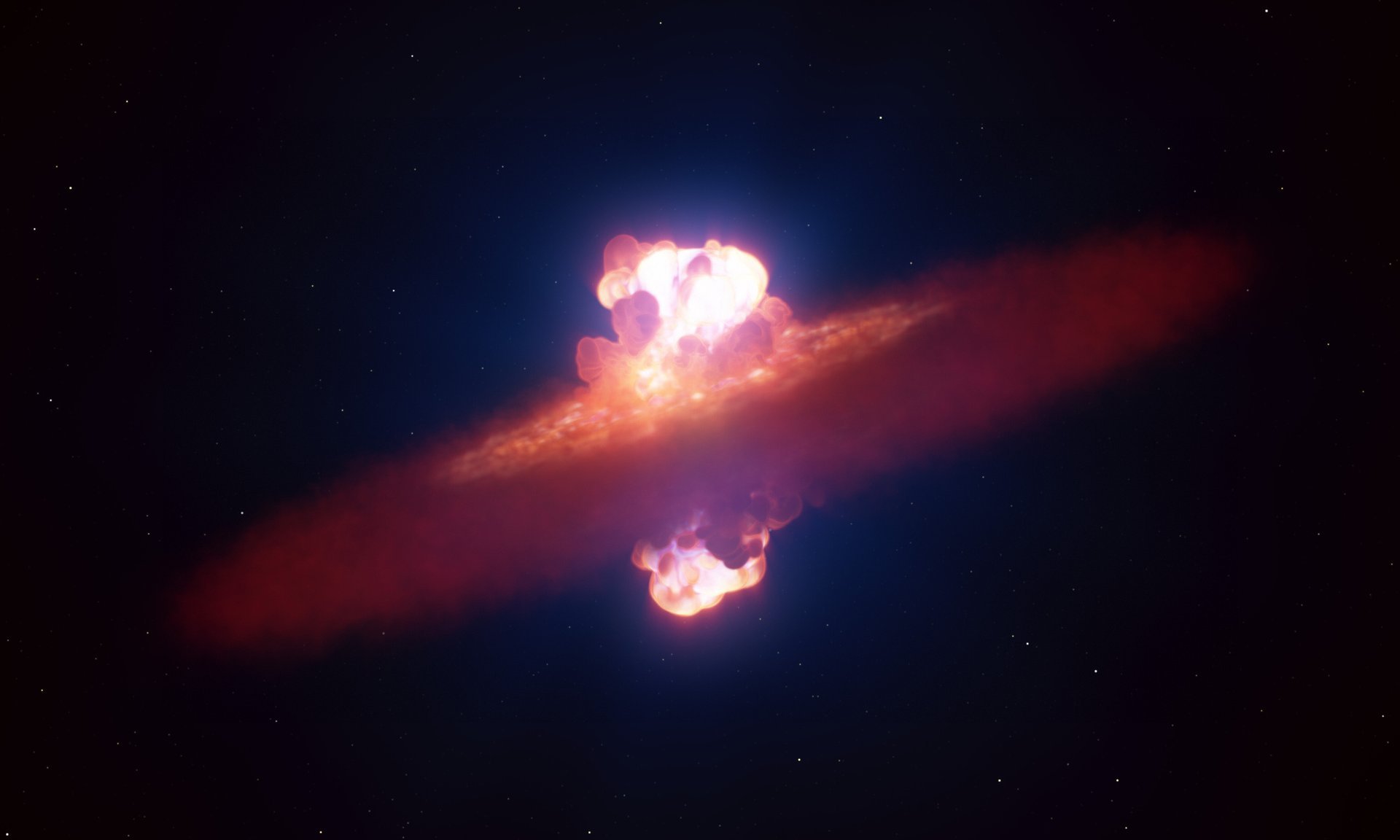Astronomers have observed the initial shape of a star exploding for the first time, revealing groundbreaking insights into the nature of supernovae. By utilizing the European Southern Observatory’s (ESO) Very Large Telescope (VLT) and employing a technique called spectropolarimetry, researchers were able to analyze the supernova SN 2024ggi, located in the galaxy NGC 3621, approximately 22 million light-years away in the constellation Hydra.
Led by Yi Yang, an assistant professor at Tsinghua University in Beijing, the research team included experts from various institutions, such as the ESO, the Cynthia Woods Mitchell Institute for Fundamental Physics and Astronomy, and the Weizmann Institute of Science. Their findings were published in the journal Science Advances.
Breakthrough in Supernova Observation
Conventional understanding posits that stars maintain their spherical shape due to a balance between gravitational pressure and internal pressure from nuclear fusion. When a star exhausts its nuclear fuel, it undergoes gravitational collapse, leading to an explosive event known as a supernova. During this explosive phase, the outer layers of the star are ejected, dispersing material into space and enriching the interstellar medium.
The current study focuses on the early moments of a supernova’s emergence, specifically the “breakout” shape observable before the shock wave interacts with surrounding materials. The team successfully captured this shape for SN 2024ggi shortly after its detection on April 10, 2024, thanks to the rapid response of the VLT team.
Utilizing the FOcal Reducer and low dispersion Spectrograph 2 (FORS2), the only instrument capable of such measurements, the researchers gathered crucial data. This spectropolarimetry technique allowed them to assess the polarization of light emitted during the explosion, a detail that remains hidden with traditional observational methods.
Insights into Stellar Evolution
The analysis revealed that the initial explosion of SN 2024ggi was olive-shaped, which flattened as the explosion expanded outward. Remarkably, the axis of symmetry of the ejected materials remained consistent throughout the event. This geometric understanding of the explosion is pivotal, as it sheds light on the mechanisms that drive massive-star supernovae—a topic that has long sparked debate among astronomers.
Dietrich Baade, an astronomer with the ESO and co-author of the study, highlighted the significance of the observations. “The first VLT observations captured the phase during which matter accelerated by the explosion near the centre of the star shot through the star’s surface,” he noted. “For a few hours, the geometry of the star and its explosion could be, and were, observed together.”
The progenitor star of SN 2024ggi was a red supergiant, approximately 500 times the radius of the Sun and 12 to 15 times more massive. The data gathered helps refine existing supernova models, allowing astronomers to rule out some theories while enhancing others.
This discovery not only advances our understanding of stellar evolution but also showcases the power of international collaboration in scientific research. As astronomers continue to analyze the findings, the implications for the study of supernovae and their role in the cosmos remain profound.






































































